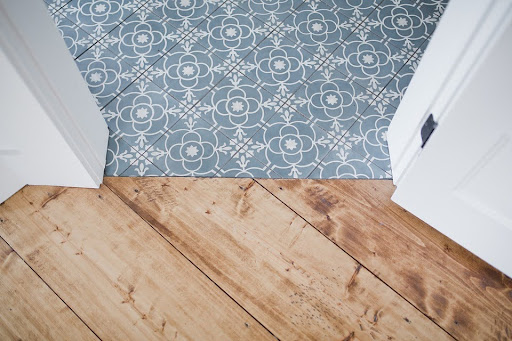Choosing the right flooring for your home is a crucial decision that impacts both the aesthetic appeal and functionality of your space. With so many options available, from hardwood and tile to carpet and laminate, selecting the perfect flooring can be overwhelming. Each type of flooring offers unique benefits and drawbacks, and the right choice depends on various factors, including your lifestyle, budget, and design preferences. This guide will help you navigate the flooring selection process, providing you with the knowledge to make an informed decision that enhances the beauty and practicality of your home.
Choosing Reliable Flooring Experts
Finding reliable experts for your flooring project can make all the difference in achieving a successful outcome. When searching for Domestic Flooring professionals, focus on those with a solid reputation and extensive experience. A company with positive reviews and a history of satisfied customers is more likely to deliver high-quality results. Ask for references and check their portfolio to ensure their style and workmanship align with your vision. Additionally, consider their warranty and after-sales support to safeguard your investment. By carefully evaluating these factors, you can confidently select a dependable team for your flooring needs.
Assess Your Lifestyle Needs
Before diving into flooring options, it’s essential to assess your lifestyle needs. The daily activities and demands of your household will play a significant role in determining the best flooring type. For example, if you have young children or pets, durability and ease of maintenance are key factors to consider. Hard surfaces like tile or vinyl may be more suitable as they are easy to clean and can withstand heavy foot traffic. On the other hand, if comfort and warmth are priorities, carpet might be the better choice. By evaluating how your flooring will need to perform under various conditions, you can narrow down your options to those that best suit your lifestyle.
Consider Room-Specific Requirements
Different rooms in your home have different requirements when it comes to flooring. For high-traffic areas such as hallways and living rooms, durability is crucial. Hardwood or engineered wood floors offer both durability and a classic aesthetic, while tile or luxury vinyl can provide additional resistance to wear and tear. In contrast, areas like bathrooms and kitchens require water-resistant flooring. Porcelain or ceramic tile and waterproof vinyl are ideal choices for these spaces due to their resistance to moisture and spills. By matching the flooring type to the specific needs of each room, you ensure that your choice will stand up to the demands of its environment.
Evaluate Budget Constraints
Budget is a significant factor when choosing flooring, as costs can vary widely between different types and materials. Hardwood floors, for instance, are often more expensive both in terms of material and installation compared to laminate or vinyl options. Carpet can offer a lower initial cost but may require more frequent replacement or maintenance. It’s important to consider not only the initial cost of the flooring but also long-term expenses such as maintenance and potential replacement. By setting a budget and exploring options within your price range, you can find a flooring solution that meets your financial constraints while still achieving the desired look and functionality.
Explore Aesthetic Preferences
The aesthetic appeal of your flooring can greatly influence the overall design of your home. Flooring choices come in a wide range of styles, colors, and finishes, allowing you to create a look that complements your interior design. Hardwood floors provide a timeless elegance, while tile offers a variety of patterns and colors to match different decor styles. Carpets come in various textures and shades, adding warmth and softness to a room. When selecting flooring, consider how it will coordinate with your existing furniture and decor. Choosing a flooring option that aligns with your aesthetic preferences ensures a cohesive and visually pleasing interior.
Understand Maintenance Requirements
Different flooring types have varying maintenance needs, which can affect your decision. Hardwood floors require regular cleaning and periodic refinishing to maintain their appearance and durability. Carpets need frequent vacuuming and occasional deep cleaning to remove stains and maintain hygiene. Tile floors are relatively low-maintenance but may require grout cleaning to keep them looking their best. Vinyl and laminate floors are known for their ease of maintenance, often requiring just a simple sweep and mop. Understanding the maintenance requirements of each flooring type helps you choose one that fits your ability and willingness to maintain it over time.
Consider Installation Process
The installation process for flooring can vary depending on the material and the complexity of the project. Some types of flooring, such as vinyl or laminate, offer DIY-friendly installation options, which can save on costs. Others, like hardwood or tile, may require professional installation to ensure proper fitting and finish. It’s important to factor in the cost and time associated with installation when making your choice. If you decide to hire a professional, obtaining quotes and understanding the scope of the work can help you budget accordingly. Considering the installation process upfront ensures that you are prepared for any additional expenses and complexities involved in the project.
Choosing the right flooring for your home involves a careful balance of lifestyle needs, room-specific requirements, budget constraints, aesthetic preferences, maintenance, installation considerations, environmental impact, and long-term value. By taking the time to evaluate each of these factors, you can select a flooring option that not only enhances the beauty of your space but also meets your functional requirements and aligns with your financial and personal goals. With the right information and careful planning, you’ll find the perfect flooring solution to make your home more stylish, comfortable, and practical.

